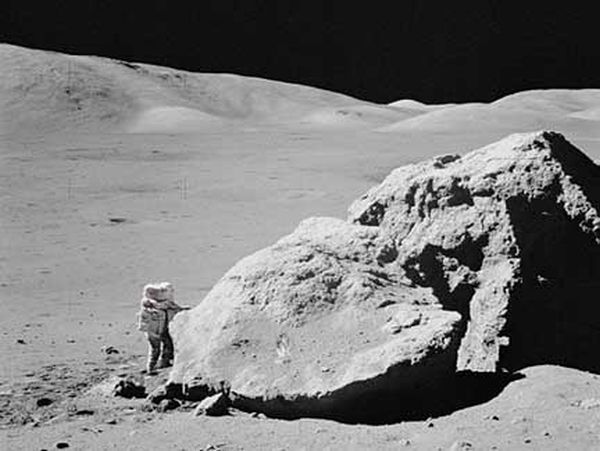GAM 2019 Blog
by Monica Young
- Published: Thursday, April 04 2019 02:37
The air feels bitter cold on a January morning, but most of the bundled four- and five-year-olds around me don’t seem to feel it. Their nose tips are turning rosy as they shout together: “3, 2, 1…”
“LIFT OFF!”
There’s a pause, then: Pffshew! The model rocket we’re all watching zips up and away.
The small crowd murmurs with delight, a collective “Whoah…” We lose the rocket in the glare of the Sun, then — pop! — its parachute opens and a flutter of orange shows us where the wind has taken it across the playing field.
It’s all over in seconds. The kids are off, giggling as they run to collect the rocket before we launch the next one. They’re only in preschool, so it’s hard to know what they’ll remember of this day, but I hope something of this excitement stays with them.
The Spirit of Apollo
I’m not old enough to remember Apollo 11’s launch or humans’ first footsteps on the Moon; it happened more than a decade before I was born. Still, the collective memory of that historic mission — that exploration on a world beyond our own — was part of what got me interested in studying science. I’m hardly alone. A 2009 study of almost 800 scientists revealed that about half had found inspiration in the Apollo missions. It wasn’t just the astronomers and the planetary scientists: Even biologists first became interested in science because of space exploration.

Harrison Schmitt, Apollo 17
Image credit: NASA
Now, 50 years on, the landscape of space has changed tremendously. NASA’s shuttle program ended in 2011 and, even as the agency is building its Space Launch System to eventually take crews to space again, the focus has shifted. Just take a look at the long list of extremely successful missions that NASA has flown over the past couple of decades, from the Curiosity rover and its predecessors on Mars to the Voyagers and New Horizons at the edges of our solar system. Rovers and probes have now journeyed far beyond where humans can go.
The images and incredible science those probes have returned serve to inspire the next generation, albeit in a different way. My kids love looking at pictures of many-striped and swirly-poled Jupiter, ringed Saturn, and heart-stamped Pluto. The images take them beyond their world, just as Apollo did for previous generations. Still, their favorite books are ones like “Max Goes to the Moon” and “Mousetronaut Goes to Mars.” They still want to go there, be there.
Perhaps that’s why the memory of Apollo still holds so much value five decades later. More than any other human endeavor, the Apollo landings showed us what the human spirit was — and is — capable of. It doesn’t matter that neither my kids nor I were there to see the Moon landings in person. When we saw those model rockets climb upward, we still felt the spirit of exploration that Apollo embodied.
| Dr. Monica Young earned her Ph.D. researching the behavior of supermassive black holes in distant galaxies. In 2012, she joined the talented team at Sky & Telescope, where as News Editor, she edits, writes, and commissions news stories and magazine feature articles. |  |






